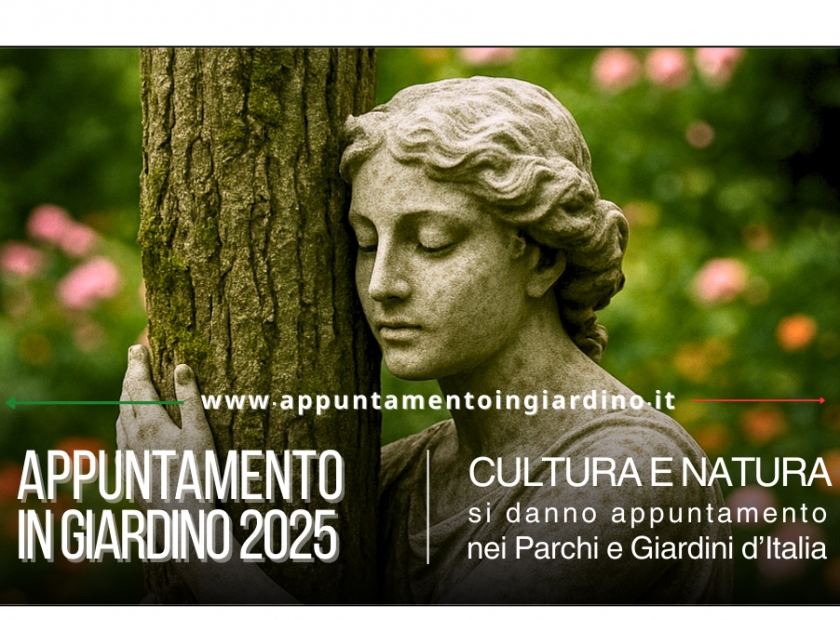On Saturday 7 and Sunday 8 June, Appuntamento in Giardino returns, the national awareness event dedicated to the parks and gardens of Italy. A living cultural heritage, to be rediscovered and experienced through openings and activities.
The initiative is promoted by APGI-Associazione Parchi e Giardini d’Italia and has been held since 2018 (European Year of Culture) in collaboration with the Ministry of Culture and Ales Spa and with the patronage of ANCI-Associazione Nazionale Comuni Italiani. Conceived as an authentic ‘garden festival’, the event was created in agreement with the Rendez-vous aux jardins initiative, which takes place simultaneously in over 20 European countries.
Also this year the Gardens of Villa della Pergola are participating in the initiative with dedicated guided tours.
This year's theme is "Gardens of stones, stones of the garden". Adhering to the 2025 theme, in addition to the historical-botanical visit, specific insights will be made into the use of stone in the Gardens of Villa della Pergola.
Stone is in fact an important element for the Gardens of Villa della Pergola as the typical terrain for cultivation is conditioned by the steep Ligurian slopes, which over the centuries have been tamed thanks to the construction of dry stone walls.
Dry Stone Walls (Muretti a secco)
In the Gardens of Villa della Pergola, dry stone walls are a living part of the landscape. During the restoration work that lasted more than 6 years, they were all redone. Traditionally built by hand, with stones positioned with patience and skill, they support the terraces of the hill and protect the land from erosion. Today, they are much more than a simple functional element: they tell the story of man's work in balance with nature. Mosses develop between the stones, spontaneous flora grows and insects and other small inhabitants find refuge there. A discreet and silent biodiversity, which makes these artifacts even more precious. This ancient technique was recognized by UNESCO in 2018 as an intangible cultural heritage of humanity, a testimony to its universal value and its deep connection with the territory".
The Risseu
A living part of the landscape in the churchyards of Ligurian churches and in the courtyards of ancient homes. The term derives from the Genoese rissêu, which means "gravel" or "pebble", and indicates those decorative floors made with sea or river pebbles, placed together by hand without the use of binders: the stones are positioned with patience, wisdom and respect for tradition. You can admire it by passing in front of the Pergolino.
Pietra del Finalese (Stone from Finale)
In the heart of Western Liguria, Pietra del Finale stands out as a silent witness to a thousand-year-old history. This bioclastic limestone, formed between 28 and 11 million years ago, is characterized by shades ranging from white to light brown and pink, and contains a rich presence of marine fossils, including shells, corals and algae. Appreciated for its resistance and beauty, Pietra del Finale has been used since ancient times in the construction of religious, civil and military buildings, helping to define the architectural identity of Liguria. During our visit to the Gardens of Villa della Pergola, we will have the opportunity to admire a staircase made of Pietra del Finale, evidence of the wise use of this material since the construction of the Garden at the end of the nineteenth century, when it was normally used. Today this type of stone can no longer be extracted.
La Casella
In the hinterland of Western Liguria, among the paths that wind through woods and terraces, we come across the caselle: rustic dry stone constructions, generally circular in shape, used in the past as temporary shelters for shepherds and farmers. Built without the use of mortar, with stones expertly overlapped, these structures offered shelter during days of work in the fields or at pasture, also serving as a storage area for agricultural tools. At the Gardens of Villa della Pergola, we will have the opportunity to discover an excellently preserved casella, hidden among the vegetation. This structure, a testimony to Ligurian peasant culture, will allow us to appreciate up close the ingenuity and simplicity of these constructions, a symbol of a past in balance with nature.
